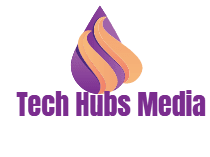Data Analytics is the process of analysing raw datasets for trends, conclusions, and improvement opportunities. Healthcare analytics uses both recent and old data to produce macro and micro insights and support business and patient decision-making. Data analytics can greatly streamline decision-making, whether you are a physical therapist who works directly with patients or a healthcare administrator who manages the industry's business side.
Improved patient care, quicker and more accurate diagnoses, preventive measures, more individualised treatment, and better decision-making are all made possible by using health data analytics. It can reduce costs, streamline internal processes, and do other things at the business level. In this blog, we'll discuss in detail the various uses of data analytics in the physical therapy sector and their advantages.
Healthcare Data Analytics: What are they?
Healthcare data analytics is the process of collecting and analysing data from the healthcare industry to gain insights and influence decision-making.
Analytics can be used at the micro and macro levels to improve operations, improve patient care, and even address overall costs. These analytics can be applied to anything from clinical data to patient behaviour, medical expenses, physical therapy, or pharmaceutical data.
What Advantages Does Data Analytics Bring to Healthcare?
#1 Better health results
Analysis
of patient data can assist physical therapists in better identifying at-risk
populations, reducing errors, and lowering readmission costs. Data evaluation
may involve various factors, including blood test results, temperature
readings, blood sugar levels, and more. The knowledge gained from such physical
therapy software data analysis aids the medical expert in better managing the
illness while concentrating on the most important outcomes
#2 Enhanced diagnosis
One of the main advantages of data analytics is that it allows a physical therapist to recommend exercises more quickly and accurately than before by analysing enormous amounts of data. These algorithms can then suggest the best tests to confirm the diagnosis. Thus, in turn, this prevents pointless testing.
#3 Gaining an operational understanding
The organisational structure and work processes significantly impact the quality of care a patient receives and the likelihood of successful patient outcomes. The organisation can easily improve the effectiveness and quality of physical therapy with an organisation-wide assessment of current conditions and other improvement goals. Data analytics can probably benefit from areas like emergency planning, charting, administration, compliance, and financial management.
#4 Cost cutting
Due to poor financial management, several clinics, hospitals, and medical institutions frequently experience high levels of financial waste. Under or overbooking staff typically results in a loss in internal budgets. Predictive analysis can be used to solve this particular issue. By accurately predicting the demand for medical supplies, predictive analytics also enables physical therapists and other healthcare facilities to save significant money. Savings can be invested to increase profits or used as additional income.
#5 Enhanced research initiatives
The research efforts can be improved by using data analytics techniques to collect clinical data from various sources. The most beneficial sources are:
EHRs - These are simply patients' medical records in a common digital format, including their diagnoses, home exercise plans, and disabilities.
Personal health records - These are patients' medical histories that are maintained independently of their physical therapists. The purpose of this record is to help the patient manage their own health; it does not take the place of the medical records that the physical therapists themselves keep on file.
EMRs - Electronic medical records are similar to electronic health records (EHRs), but they also include data from the patient's paper chart that was created at the clinic, doctor's office, or hospital. The electronic medical record tracks a patient's healthcare over time and is used for diagnosis and treatment.
Public health records - These are the most trustworthy sources of health information for use in medical research.
To Sum Up
Today, the direction of the world is toward evidence-based medicine. This necessitates utilizing all clinical data that is currently available and incorporating it into advanced analytics. As a result, more lives will be saved, costly testing will be decreased, resources will be saved, and the right drugs will be prescribed.
Digital Analytics play a significant role in physical therapy as agents that save patients' lives and assist hospitals, and medical facilities lower operating expenses. Additionally, it strengthens the economy by prudently utilising its investments. Data Analytics in physical therapy presents limitless opportunities, and new, innovative approaches to assisting the healthcare sector will continue to emerge.


.png)

.png)





0 Comments